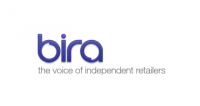COVID-19 Job Retention Scheme Advice for employers
Posted on in Business News, Cycles News, Political News
 tion Scheme (JRS) to continue paying 80% of the salary for employees that would otherwise have been laid off or made redundant, the practical next steps and potential complications of the scheme. Explained by Nigel Morris, tax director at MHA MacIntyre Hudson and published by Retail Sector.
tion Scheme (JRS) to continue paying 80% of the salary for employees that would otherwise have been laid off or made redundant, the practical next steps and potential complications of the scheme. Explained by Nigel Morris, tax director at MHA MacIntyre Hudson and published by Retail Sector.
Key points include:
- Furloughed workers should not undertake any work for the company, including answering calls or emails
- JRS should not interrupt an employees' continuity of service
- Annual leave will continue to accrue
- No PAYE tax/ or national insurance contributions are due
- The grant is a reimbursement by HMRC so businesses may face cash flow issues
- Changing the status of employees remains subject to existing employment law and may be subject to negotiation
The terms
The Job Retention Scheme is a huge incentive for companies to keep employees on payroll. To access the support companies need to classify employees as a furloughed worker, which means they should not undertake any work for the company while furloughed, including answering calls or emails. In exchange employers can claim a grant of up to 80% of each employee's wage for all employment costs, up to a cap of £2,500 per month.
The employee remains employed and their employer can choose to fund the difference between this payment and their usual salary, but it's not compulsory. Assuming notice hasn't yet been served on ‘at risk' employees, and even if it has, employers should discuss the JRS with them as part of any consultation process and agree to either carry on with the redundancy process, or agree to use the JRS as an alternative. Should the business decide, at a later point, that redundancies are still necessary, they should take legal advice at that stage on the associated risks.
We don't yet know whether employees will be restricted from taking on other/new work while receiving a salary under the scheme, but government advice is being updated on a daily basis. It's likely that the JRS will not interrupt an employees' continuity of service. Likewise, annual leave will continue to accrue while staff remain employed.
The grant is a reimbursement by HMRC of salary costs paid to furloughed workers, so businesses may face cash flow issues in paying these workers. A number of options may be open to businesses, including the Government's Coronavirus Business Interruption Loan.
JRS is intended to run for at least three months from 1 March 2020, but it will be extended if necessary. The JRS will cover the cost of wages backdated to 1 March 2020 and will be open before the end of April. It is open for workers who were in employment on 28 February.
Putting the scheme into practice
We anticipate furloughed employees will be deemed as taking a leave of absence. On that basis, they would strictly be unpaid. The government needs to structure the grant so it isn't ‘pay', and therefore no PAYE tax or national insurance contributions (NIC) are due, and no benefits driven from pay are applicable. It's normal practice in countries such as the US, that already have the status of furloughed worker, for benefits like health and life cover to continue while an employee is furloughed. However, in our view the JRS should be implemented in such a way that these do not impact on the flow of the 80% from the government via the employer to the employees.
There could be further complications, for example where the employee pays for additional private medical cover as part of an employee benefits scheme.
We also await details on how the JRS will apply to employees within personal service companies (PSCs). We anticipate that PSCs will be eligible in the same way as other businesses and subject to the same expected rules on the reference salary for the 80% calculation.
Eligibility and accessing the JRS
All UK businesses are eligible as long as they:
- Designate affected employees as ‘furloughed workers'
- Notify those employees of this change - changing the status of employees remains subject to existing employment law and, depending on the employment contract, may be subject to negotiation
- Submit information to HMRC about the employees that have been furloughed and their earnings. This will be through a new online portal - HMRC will set out further details on the information required.
How businesses should prepare - the financials
- Set up the payroll with a furloughed pay element to identify the amounts for reclaim
- Calculate furloughed pay based on the 12 weeks up to the end of February. Use regular basic pay but not overtime or bonuses. Please note: This is our estimate of the likely period for assessment - details still to be confirmed by the Government.
- For employees off sick during that 12 weeks, base furloughed pay on the amounts excluding sick pay
- Assume this is still pay and that PAYE tax and NIC deductions will be due, albeit that payments to HMRC are likely to be deferred
- This is a grant that reimburses the business, so cash flow could still be an issue. A bank facility or loan may be required to fund these payments prior to reimbursement.
Practical step by step process
- Identify those employees ‘at risk' and earmarked for lay-off
- Analyse pay from the last 12 weeks up to the end of February (estimated timeframe, government still to confirm)
- Establish base pay that qualifies for 80% furloughed grant
- Identify employees where £2,500 cap will apply
- Calculate additional pay required to get to ‘normal' pay
- Model options to manage any top up outside of the grant
- Identify employees required to remain in employment
- Model options to flex remuneration for those employees not furloughed, including establishing new ‘base' pay in line with national minimum wage and employment related loans
- Commence communication with all affected employees including illustrations of proposed payments
- Obtain employee/union buy-in
- Implement changes to payroll and pay elements
- Prepare application to HMRC
- Register and log-on to new HMRC portal (timing TBC)
- Submit required information to HMRC
- Receive reimbursement via new system
Additional considerations
When are employees entitled to SSP?
- If an employee is displaying coronavirus symptoms, they should stay home and will be eligible for SSP; this will be for the whole 14 days and not from the fourth day onwards as is usually the case for SSP
- If an employee is in a vulnerable group, has returned from high risk country or been in contact with a confirmed case or person displaying symptoms, they should stay home or be sent home and will also be entitled to SSP
- If an employee is in the same household as someone who is displaying symptoms, they should stay home for 14 days and will be entitled to SSP
- If an employee chooses to self-isolate and does not fall into any of the above categories, the employer does not have to pay them as this is a personal decision the employee is making
- If an employee is not displaying symptoms, in a vulnerable group, or living with someone displaying symptoms but is told to go home or not come in, for example because the whole business is shutting temporarily, they are entitled to full pay unless the employer has a short time working/lay off clause in their contracts, as this is a business decision the employer is making
What happens if we have to close the business?
If the employer shuts the business and tells staff who are ready and able to work not to come into work, it is the employer that is not providing work for them. The employer would have to continue to pay them in full pay unless there is a shortage of work/lay off clause in their contracts and the employees have signed their contracts.
Enforcing use of holiday entitlement
Businesses are permitted to require employees to take any paid holiday entitlement they have, but must give notice of twice the length of the period of holiday they are being required to take.
Useful links
If you have any other queries please contact us.





















